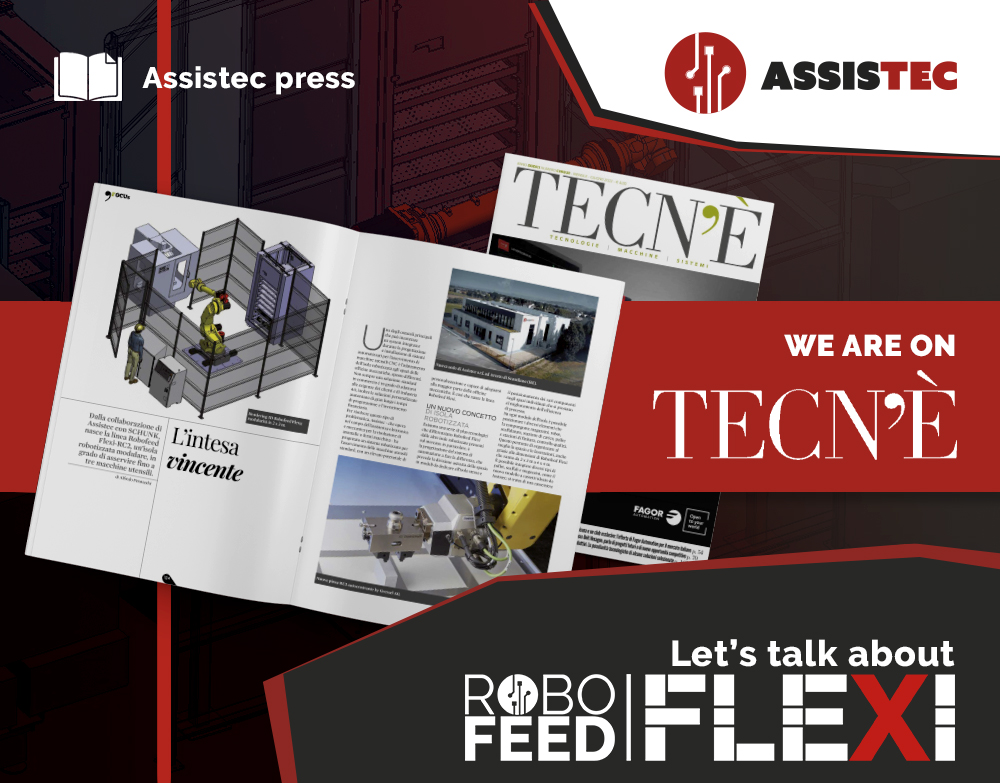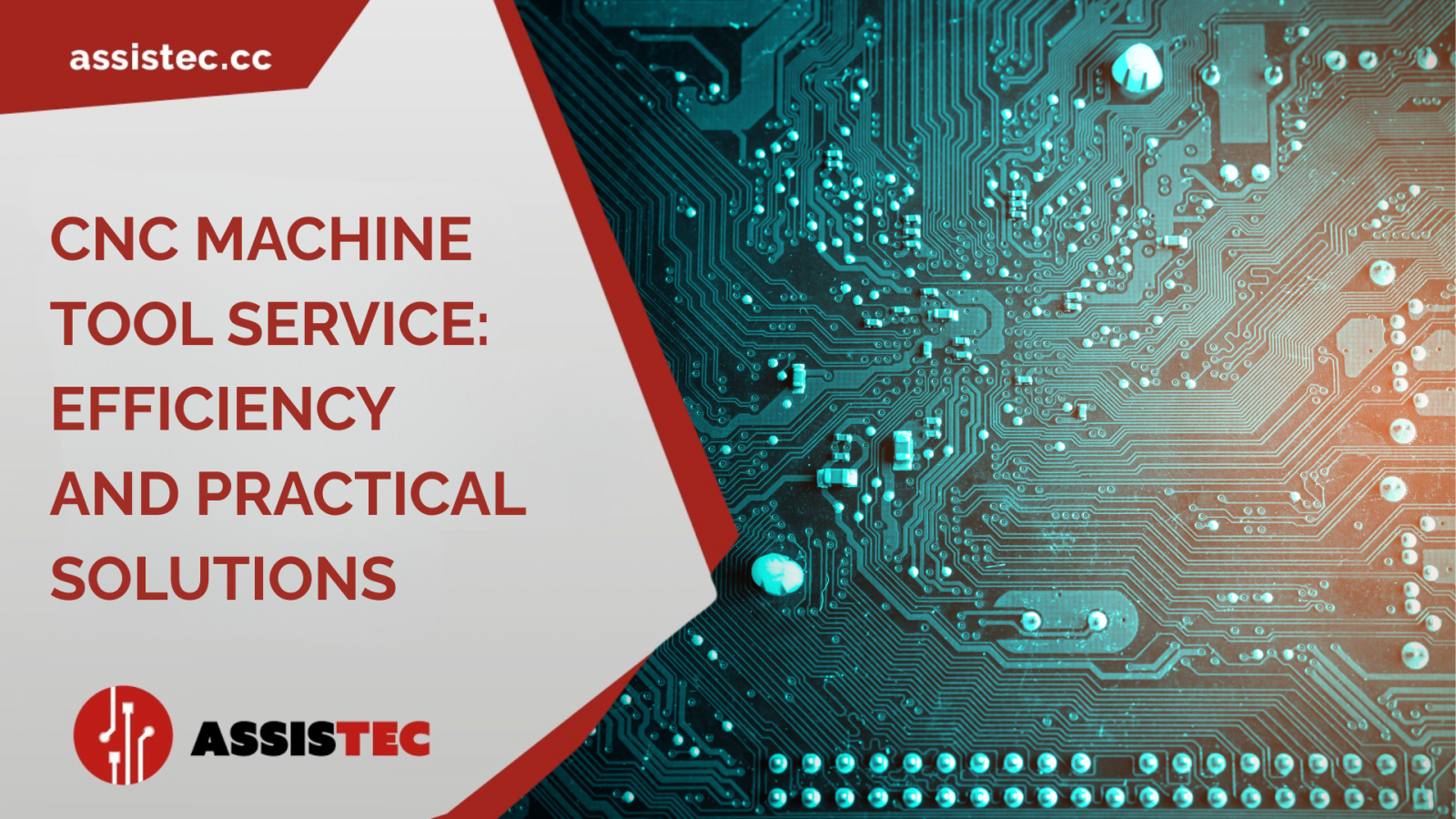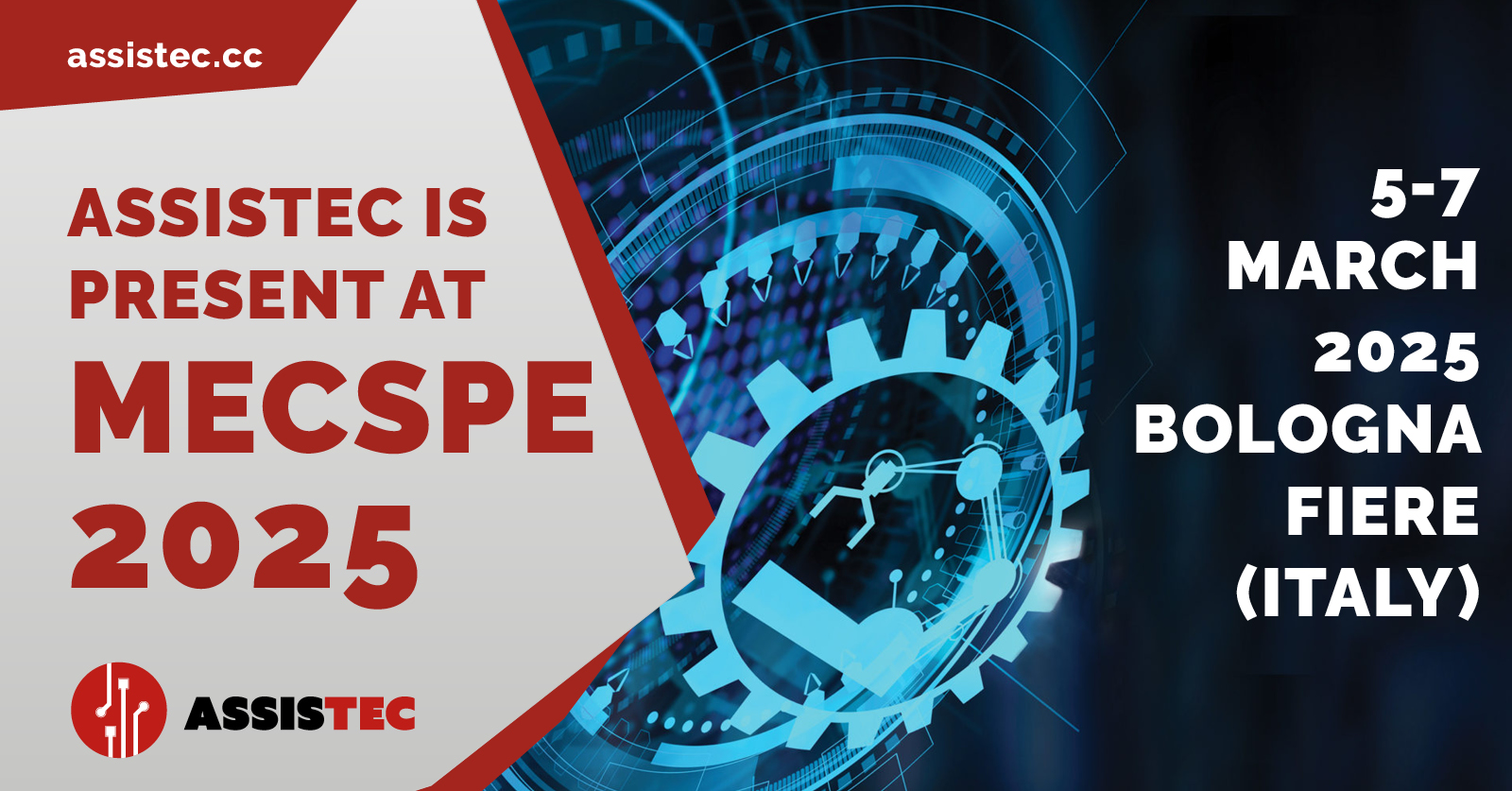In June edition Tecné magazine dedicates extensive space to Robofeed Flexi


The perfect arrangement. The collaboration of Assistec with SCHUNK resulted in the Robofeed Flexi-RC2 line, a modular robotic island that can serve up to three machine tools. by Alfredo Pennacchi
One of the main obstacles a system integrator may encounter during the design and installation of automated systems for the operation of CNC machine tools is the adaptation of the robotic island to the often different workshop spaces.
Commercially available standard solutions cannot always be adapted to the needs of customers and Industry 4.0, and customised solutions greatly increase the planning time and financial investment.
To solve this type of problem, Assistec - which operates in the field of electronic and mechanical assistance for troubleshooting or machine downtime – has designed a robotic system for the servicing of standard machine tools, with a high potential for customisation as well as being able to adapt to most workshop environments. This is how the Robofeed Flexi line was created.
A new concept of robotic island
Robofeed Flexi has a number of technological pluses that set it apart from other robotised islands on the market; in particular, it is the design of the automation system that makes the difference, which consists in the abstract division of space into modules to be dedicated to the island itself and the positioning of the various components in the spaces identified that lend themselves to streamlining processes.
On each module of the island it is possible to position the different elements that make it up: warehouses, robot, racks, loading station, pallet and finishing stations, and quality control. This allows an optimal organisation of space and machining, also due to the dimensions of Robofeed Flexi ranging from 2x3 m to 4x4 m.
Different types of pallets, shelves and magazines can be integrated, such as the new drawer model designed by Assistec; this is a tower-type drawer system - with drawers that are both motorised on the robot side and manual on the operator side - which allows interaction and continuity of production. In addition, the drawer's new workpiece carrier system allows the operator to handle a greater number of machine-processed parts without great physical effort.
Further integrations are available to complete the island, such as 3D vision systems, optical or physical measuring systems, and blowing and reprocessing stations.
Technological pluses for all-round automation
One of the possible configurations of the Flexi line is the Robofeed Flexi-RC2, which is the result of a deep synergy between companies. The configurator was designed by Assistec to enable the best solution to be studied together with the customer to meet their production needs at the time, while an innovative gripping and clamping system developed by the Group SCHUNK GmbH & Co. KG (www.schunk.com) ensures that all blank faces can be processed in complete autonomy. This guarantees an increase in productivity, leaving operators free to devote themselves to other tasks. The most significant innovation can be found in the self-centring vice gripping system, which when completed with the zero-point module provides a perfectly tuned loading and processing system. For this island, we chose the new R-C2 system by Gressel, the self-centring vice that transforms into a gripping hand manufactured by Gressel AG (www.gressel.ch), a Swiss company owned by the SCHUNK group, a historical manufacturer of manual vices. This revolutionary system, designed in collaboration with SCHUNK's Gripping Systems division, allows unmachined parts to be handled and positioned directly on the machine using the zero-point module VERO-S SCHUNK, which was specially developed for automation applications.
The robot picks up the workpiece from the warehouse and brings it to the machine, attaching the gripper to the zero-point module. This step avoids imprecise gripping and unnecessary time wastage. When the processing is finished, the robot simply re-engages the gripper for stocking the workpiece. With RC2 by Gressel, it is possible to add a module for processing a sixth face, through a simple gripper exchange between two grippers. In addition, a limited number of grippers allows parts of various sizes and dimensions to be processed, thanks to the large jaw ranges.
Recent Posts

-
Assistec is your partner with over 25 years of experience in full service for CNC machine tools, offering both electronic and mechanical technical support. Our main objective is to minimise machine downtime, ensuring a rapid return to production and an efficient return on investment.
CNC electronic support services: rapid diagnosis and effective solutions
Our electronic service on CNC machine tools is characterised by a comprehensive service that begins with a thorough prior telephone diagnosis by our service department. This initial phase is crucial to quickly understand the nature of the problem. Thanks to our well-stocked electronic spare parts warehouse, we are often able to resolve the fault already during the first technical intervention.
-
MECSPE 2025 is one of Europe's leading trade fairs dedicated to innovation in the manufacturing industry. It is a crucial event for companies that want to stay up-to-date with the latest technologies, solutions and trends in the industry.
Over the years, MECSPE has helped transform artisanal processes into large-scale precision industrial systems. Today, the show serves as a meeting point for machinery manufacturers, technology suppliers, system integrators, and end users, creating an ideal environment for networking and knowledge exchange.
MECSPE is essential to discover how to automate and digitise production processes, improve efficiency, reduce costs and increase competitiveness. In this context, Assistec has decided to play a leading role once again, confirming its presence also in the 2025 edition.
-
Numerically controlled (CNC) machines represent one of the most important technological innovations of the modern industrial era.
Their ability to automate and standardise complex operations has changed the face of manufacturing, transforming craft processes into large-scale industrial precision systems.
The spread of CNC machines has made it possible to reduce human error, increase productivity and, above all, guarantee repeatability of machining operations that would otherwise have been impossible. This has proved particularly crucial in sectors where precision, efficiency and speed are vital, such as aerospace, automotive, precision engineering and medical device manufacturing.
One of the main reasons for the success of CNC machines is their ability to perform tasks with extreme precision that previously required the manual intervention of skilled workers.
With CNCs, on the other hand, once the machining has been programmed, the machine can perform an infinite sequence of operations without loss of precision, solving problems of variability and improving the quality of the finished product.
At this point, the question might arise: when did CNC machines originate and how did they reach this level of sophistication?



